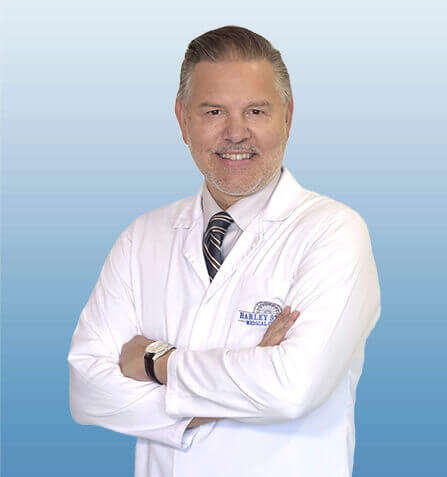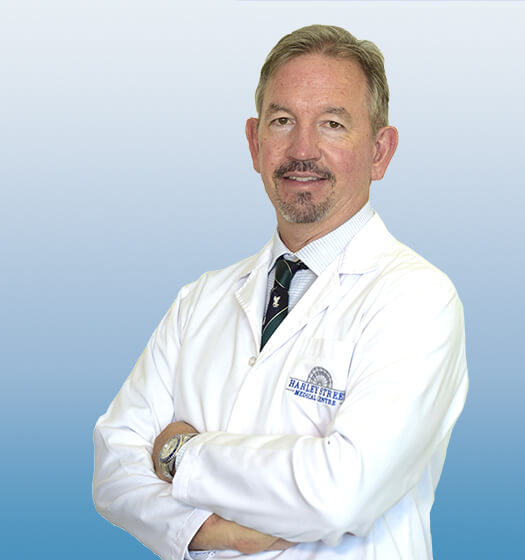ARTHRITIS OF THE SHOULDER
The term arthritis literally means inflammation of a joint, but is generally used to describe any condition in which there is damage to the cartilage. Damage of the cartilage in the shoulder joint causes shoulder arthritis. Inflammation is the body’s natural response to injury. The warning signs that inflammation presents are redness, swelling, heat and pain.
The cartilage is a padding that absorbs stress. The proportion of cartilage damage and synovial inflammation varies with the type and stage of arthritis. Usually the pain early on is due to inflammation. In the later stages, when the cartilage is worn away, most of the pain comes from the mechanical friction of raw bones rubbing on each other.
TYPES OF ARTHRITIS
There are over 100 different types of rheumatic diseases. The most common are osteoarthritis and rheumatoid arthritis.
Osteoarthritis: Osteoarthritis is also called as degenerative joint disease; this is the most common type of arthritis, which occurs often in older people. This disease affects cartilage, the tissue that cushions and protects the ends of bones in a joint. With osteoarthritis, the cartilage starts to wear away over time. In extreme cases, the cartilage can completely wear away, leaving nothing to protect the bones in a joint, causing bone-on-bone contact. Bones may also bulge, or stick out at the end of a joint, called a bone spur.
Osteoarthritis causes joint pain and can limit a person’s normal range of motion (the ability to freely move and bend a joint). When severe, the shoulder joint may lose all movement, making a person disabled.
Rheumatoid Arthritis (RA): This is an auto-immune disease in which the body’s immune system (the body’s way of fighting infection) attacks healthy joints, tissues, and organs. Occurring most often in women of childbearing age (15-44), this disease inflames the lining (or synovium) of joints. It can cause pain, stiffness, swelling, and loss of function in joints. When severe, rheumatoid arthritis can deform, or change, a joint.
Rheumatoid arthritis affects mostly joints of the hands and feet and tends to be symmetrical. This means the disease affects the same joints on both sides of the body (both the hands or both feet) at the same time and with the same symptoms. No other form of arthritis is symmetrical. About two to three times as many women as men have this disease.
CAUSES
Osteoarthritis is caused by the wearing out of the cartilage covering the bone ends in a joint. This may be due to excessive strain over prolonged periods of time, or due to other joint diseases, injury or deformity. Primary osteoarthritis is commonly associated with ageing and general degeneration of joints.
Secondary osteoarthritis is generally the consequence of another disease or condition, such as repeated trauma or surgery to the affected joint, or abnormal joint structures from birth.
Rheumatoid arthritis is often caused when the genes responsible for the disease is triggered by infection or any environmental factors. With this trigger body produce antibodies, the defense mechanism of body, against the joint and may cause rheumatoid arthritis.
SYMPTOMS
There are several forms of arthritis and the symptoms vary according to the form of arthritis. Each form affects the body differently. Arthritic symptoms generally include swelling and pain or tenderness in joints for more than two weeks, redness or heat in a joint, limitation of motion of a joint, and early morning stiffness.
In an arthritic shoulder
- The cartilage lining is thinner than normal or completely absent. The degree of cartilage damage and inflammation varies with the type and stage of arthritis
- The capsule of the arthritic shoulder is swollen
- The joint space is narrowed and irregular in outline; this can be seen in an X-ray image.
- Bone spurs or excessive bone can also build up around the edges of the joint
DIAGNOSIS
Doctors diagnose arthritis with a medical history, physical exam and X-rays of the affected part. Computed tomography (CT) scans and magnetic resonance imaging (MRI) scans are also performed to diagnose arthritis.
TREATMENT OPTIONS
There is no cure for arthritis, so beware of ‘miracle cures’. Your doctor may prescribe anti-inflammatory medicine. They may recommend occupational therapy or physiotherapy, which includes exercises and heat treatment. In severe cases, surgery may be suggested. The type of surgery will depend on your age and severity of the disease. In the elderly with severe arthritis, joint replacement can give good results. Common surgery for treatment of shoulder arthritis arthroplasty (replacement of the damaged joint) may be total shoulder arthroplasty or hemiarthroplasty.
FROZEN SHOULDER
Frozen shoulder is a painful shoulder condition that limits movement and causes stiffness in the joint. It is also called adhesive capsulitis and may progress to the state where you may find it very hard to move your arm. Frozen shoulder is more common in older adults between 40 and 60 years, and occurs more often in women than men.
ROTATOR CUFF TEAR
The rotator cuff is a group of tendons in the shoulder joint that cover and provide support to the shoulder joint, enabling wider range of motion. A tear in the rotator cuff is one of the most common causes of shoulder pain in middle aged adults and older individuals. It may occur with repetitive movements while working or playing sports, during motor accidents, lifting a heavy object or a fall on an outstretched arm. As aging occurs, bone spurs may develop and can damage tendon tissue causing tears.
SHOULDER INSTABILITY
Shoulder instability is a chronic condition that causes frequent dislocations of the shoulder joint. A dislocation occurs when the end of the humerus (the ball portion) partially or completely dislocates from the glenoid (the socket portion) of the shoulder. A partial dislocation is referred to as a subluxation whereas a complete separation is referred to as a dislocation. The common symptoms of shoulder instability include pain with certain movements of the shoulder; popping or grinding sound may be heard or felt, swelling and bruising of the shoulder may be seen immediately following subluxation or dislocation.
SLAP TEARS
The shoulder joint is a ball and socket joint. A ‘ball’ at the top of the upper arm bone (the humerus) fits neatly into a ‘socket’, called the glenoid, which is part of the shoulder blade (scapula). The term SLAP (superior –labrum anterior-posterior) lesion or SLAP tear refers to an injury of the superior labrum of the shoulder. The labrum is a ring of fibrous cartilage surrounding the glenoid for stabilization of the shoulder joint. The biceps tendon attaches inside the shoulder joint at the superior labrum of the shoulder joint. The biceps tendon is a long cord-like structure which attaches the biceps muscle to the shoulder and helps to stabilize the joint.
TREATMENTS
PARTIAL SHOULDER REPLACEMENT
Partial shoulder replacement, also called shoulder hemiarthroplasty is a surgical procedure during which the upper bone in the arm (humerus) is replaced with a prosthetic metal implant, whereas the other half of the shoulder joint (glenoid or socket) is left intact. This surgical procedure is indicated in severe, persistent conditions of shoulder osteoarthritis in which the only the humeral head or ball of the joint is damaged. Osteoarthritis is a degenerative condition in which the cartilage that allows smooth movement in the joints wears away causing the adjacent bone to rub against each other resulting in pain and stiffness. In such conditions, replacement of the damaged portion of the humerus will reduce the friction as bone ends can no longer come in contact and thus relieve pain.
REVERSE SHOULDER REPLACEMENT
Reverse total shoulder replacement, is an advanced surgical technique specifically designed for rotator cuff tear arthropathy, a condition where the patient suffers from both shoulder arthritis and a rotator cuff tear.
The shoulder joint is a ball and socket joint formed by the union of the head of the upper arm bone (humerus) and the shoulder socket (glenoid). The rotator cuff is a group of four tendons that join the head of the humerus to the deeper shoulder muscles to provide stability and mobility to the shoulder joint.
SHOULDER ARTHROSCOPY
Arthroscopy is a minimally invasive diagnostic and surgical procedure performed for joint problems. Shoulder arthroscopy is performed using a pencil-sized instrument called an Arthroscope. The arthroscope consists of a light system and camera to project images to a computer screen for your surgeon to view the surgical site. Arthroscopy is used to treat disease conditions and injuries involving the bones, cartilage, tendons, ligaments, and muscles of the shoulder joint.
SHOULDER JOINT REPLACEMENT
The shoulder is a highly movable body joint that allows various movements of the arm. It is a ball and socket joint, where the head of the humerus (upper arm bone) articulates with the socket of the scapula (shoulder blade) called the glenoid. The two articulating surfaces of the bones are covered with cartilage, which prevents friction between the moving bones. The cartilage is lubricated by synovial fluid. Tendons and ligaments around the shoulder joint provide strength and stability to the joint.









